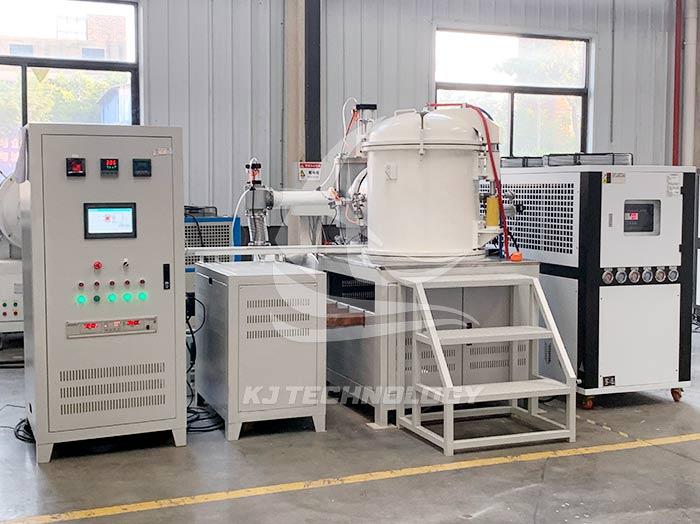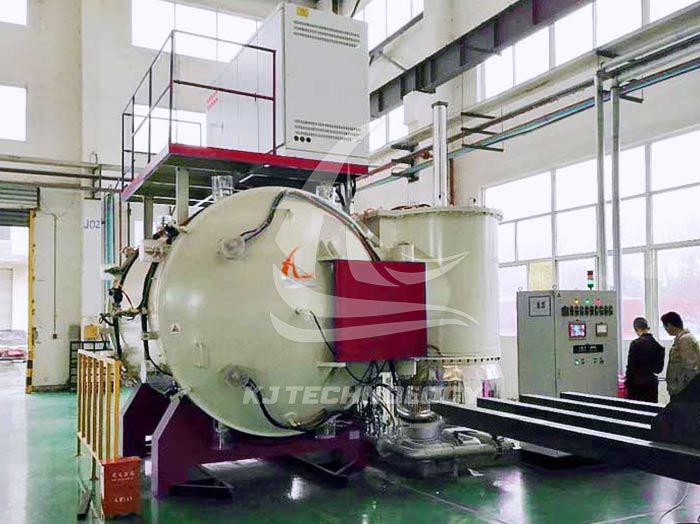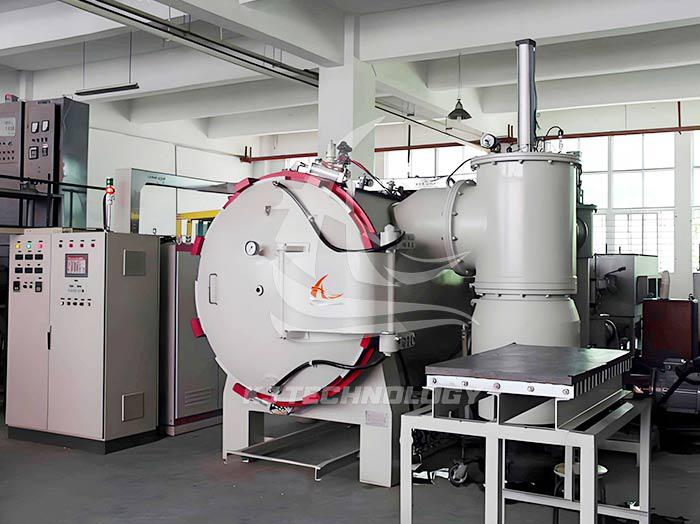Precautions for operation during vacuum furnace annealing
 10-10-2025 Author: KJ technology
10-10-2025 Author: KJ technology
In order to ensure the annealing effect, equipment safety, and personnel safety during vacuum furnace annealing, it is necessary to strictly control the preparation before operation, process control, post-treatment, and safety protection. The following are detailed operational precautions:
1. Preparation before operation
Equipment inspection:
Check if the vacuum system, heating system, cooling system, control system, etc. of the vacuum furnace are working properly to ensure no leaks or malfunctions.
Check if the interior of the furnace is clean and free of residue or impurities to avoid affecting the annealing effect or damaging the furnace.
Check the accuracy and reliability of temperature sensors, pressure sensors, and other detection components to ensure real-time monitoring of temperature and pressure inside the furnace.
Material preparation:
Select the appropriate furnace loading method based on the type, size, and annealing requirements of the annealed material to ensure uniform heating of the material inside the furnace.
Clean the material to remove impurities such as oil stains and oxides on the surface, in order to prevent contamination or affect the annealing effect during the annealing process.
For materials that are prone to oxidation or volatilization, special protective measures should be taken, such as using a protective atmosphere or coating a protective layer.
Parameter settings:
According to the annealing process requirements of the material, set appropriate parameters such as annealing temperature, holding time, and heating and cooling rate.
For different materials or batches of materials, it is necessary to adjust the annealing parameters to ensure consistency in the annealing effect.
Set safety parameters, such as maximum temperature limit, minimum vacuum limit, etc., to prevent equipment from overheating or overpressure operation.
2. Operation process control
Vacuum pumping:
Start the vacuum system and gradually reduce the pressure inside the furnace to the required vacuum level. During the vacuuming process, it is necessary to closely observe the changes in vacuum degree to ensure that the vacuuming speed is moderate and avoid excessive airflow impact.
For annealing processes that require high vacuum levels, multiple vacuuming and inflation operations are required to thoroughly remove residual gases from the furnace.
Heating and insulation:
Start the heating system and heat according to the set temperature rise and fall program. During the heating process, it is necessary to closely observe the temperature changes inside the furnace to ensure a uniform increase in temperature and avoid local overheating.
After reaching the annealing temperature, perform insulation treatment. The insulation time needs to be precisely controlled according to the material type and annealing requirements to ensure sufficient transformation of the internal structure of the material.
During the insulation process, it is necessary to regularly check the temperature and pressure inside the furnace to ensure the normal operation of the equipment.
Cooling:
After the insulation is completed, choose a suitable cooling method (such as air cooling, oil cooling, etc.) according to the process requirements for cooling. During the cooling process, it is necessary to control the cooling rate to avoid excessive thermal stress that may cause material cracking.
For materials that require slow cooling, segmented cooling or furnace cooling can be used.
3. Post operation processing
Material retrieval:
When the temperature inside the furnace drops to a safe range, open the furnace door and take out the annealed material. During the material retrieval process, protective gloves and goggles should be worn to prevent burns or splash injuries.
Perform a visual inspection on the extracted material to observe for defects such as cracks and deformations. If there are defects, the reasons need to be analyzed and corresponding measures taken.
Equipment cleaning:
Clean the residue and impurities inside the furnace to maintain its cleanliness. For materials that are prone to adhere to the inner wall of the furnace, specialized cleaning tools should be used for cleaning.
Check if there is any damage or corrosion on the inner wall of the furnace. If there is any damage, it is necessary to repair or replace the inner wall of the furnace in a timely manner.
Recording and analysis:
Record various parameters during the annealing process (such as temperature, pressure, time, etc.) and the annealing effect (such as material properties, appearance, etc.). These records are of great significance for subsequent process optimization and quality control.
Analyze the annealing effect and evaluate whether the annealing process meets the requirements. If the requirements are not met, it is necessary to adjust the annealing parameters or improve the annealing process.
4. Security protection
Personal protection:
Operators are required to wear personal protective equipment such as protective gloves, goggles, and protective clothing to prevent burns, splash injuries, and inhalation of toxic gases.
During the operation, it is necessary to remain vigilant and pay attention to observing the operating status of the equipment and changes in the surrounding environment.
Equipment safety:
Regularly maintain and upkeep the vacuum furnace to ensure that the equipment is in good condition. For vulnerable parts and critical components, regular replacement or inspection is required.
Set up safety warning signs and operating procedures on the equipment to remind operators to pay attention to safety.
For sudden malfunctions or abnormal situations, the equipment should be immediately stopped and corresponding emergency measures should be taken.
Environmental safety:
The vacuum furnace should be installed in an environment with good ventilation and no flammable or explosive materials. During the operation, it is necessary to keep the environment clean and avoid the accumulation of debris.
For pollutants such as exhaust gas and wastewater generated, they need to be treated and discharged in accordance with environmental protection requirements.








